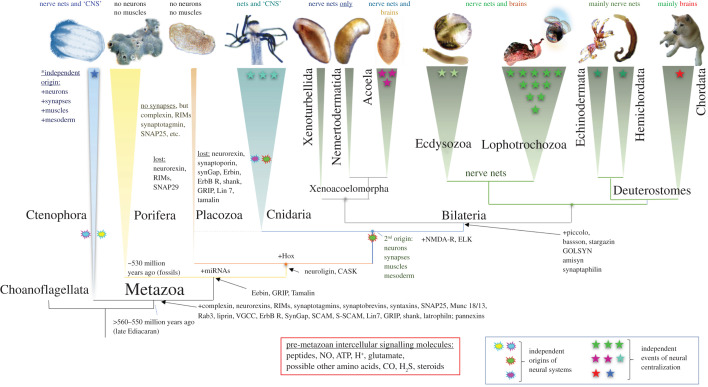Figure 2.
Parallel evolution of neural systems across Metazoa. Reconstruction of phylogenetic relationships among major clades of basal Metazoa (the consensus tree according to [43–49]). The schematic diagram illustrates the hypothetical events of neuronal origins (cloud marks) and neuronal centralizations (stars). The presence/absence of the central nervous system (CNS), nerve nets or brains is indicated above each phyletic lineage. Ctenophores have been recovered as the lineage sister to all other metazoans. Ctenophores have two distinct neural systems (the epidermal and mesogleal nerve nets [50–54]). Porifera and Placozoa have no recognized neurons and muscles. Cnidaria and Bilateria might have a shared ancestry of their neuronal systems (the 2nd independent origin event). However, it is also possible that some neuronal populations in cnidaria evolved independently compared to bilaterians. Events of neuronal centralization (stars) and the formation of complex brains occurred more than twenty times across animal lineages [19,55,56] with the greatest diversity of neural system types in Mollusca [19]. Arrows show gains (+) of selected synaptic proteins, microRNAs machinery and Hox genes. The red box outlines the proposed ancestral set of pre-metazoan transmitters.

